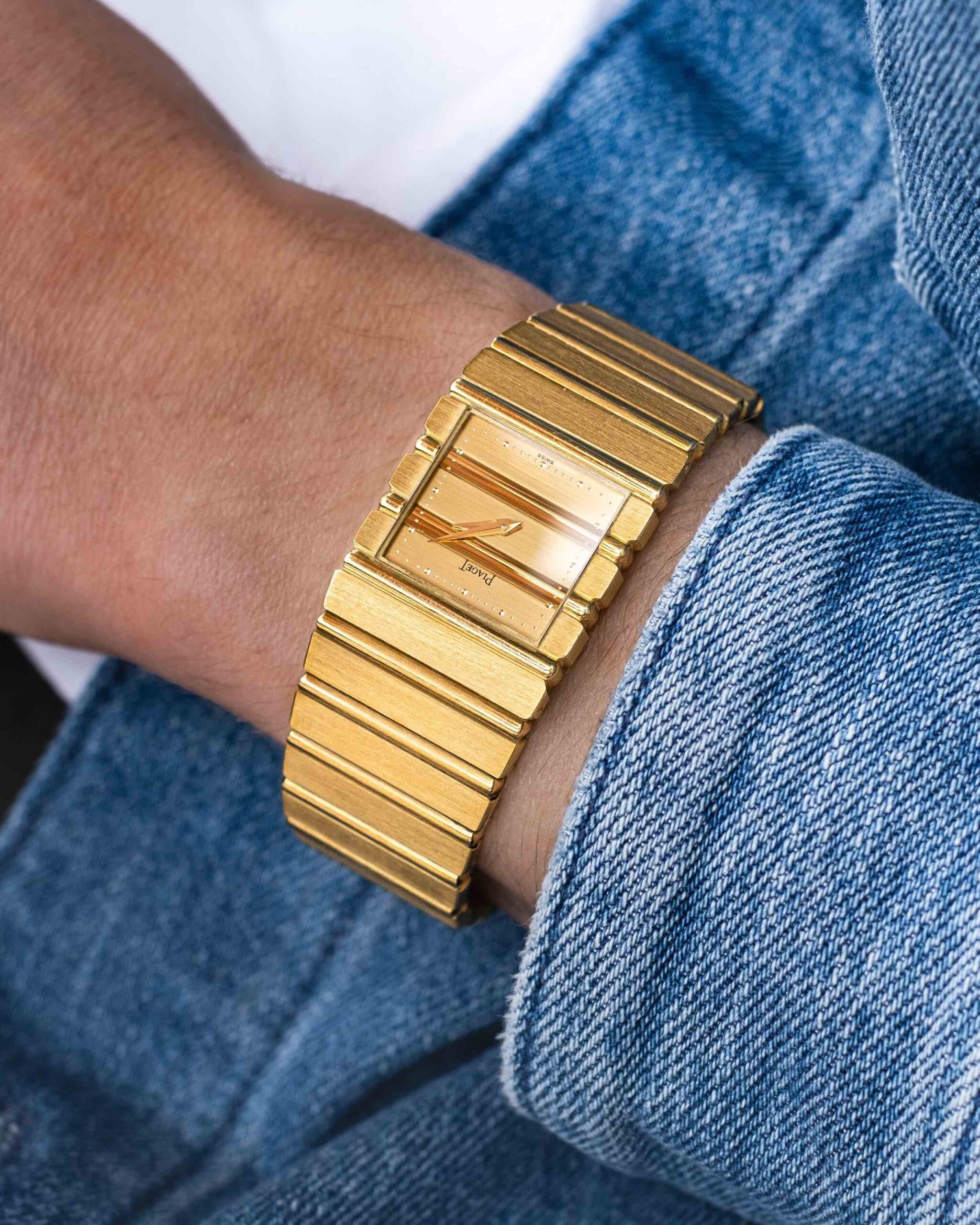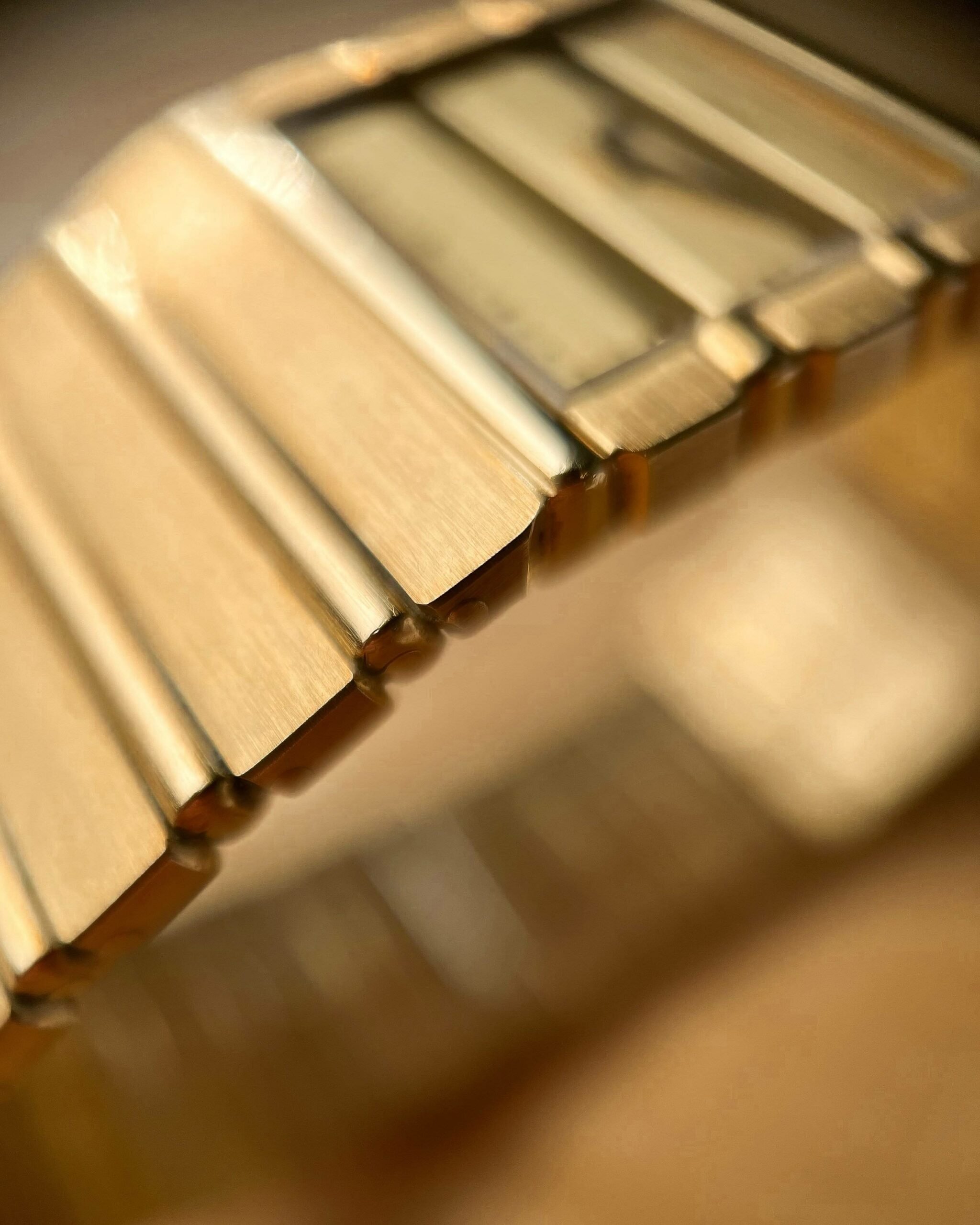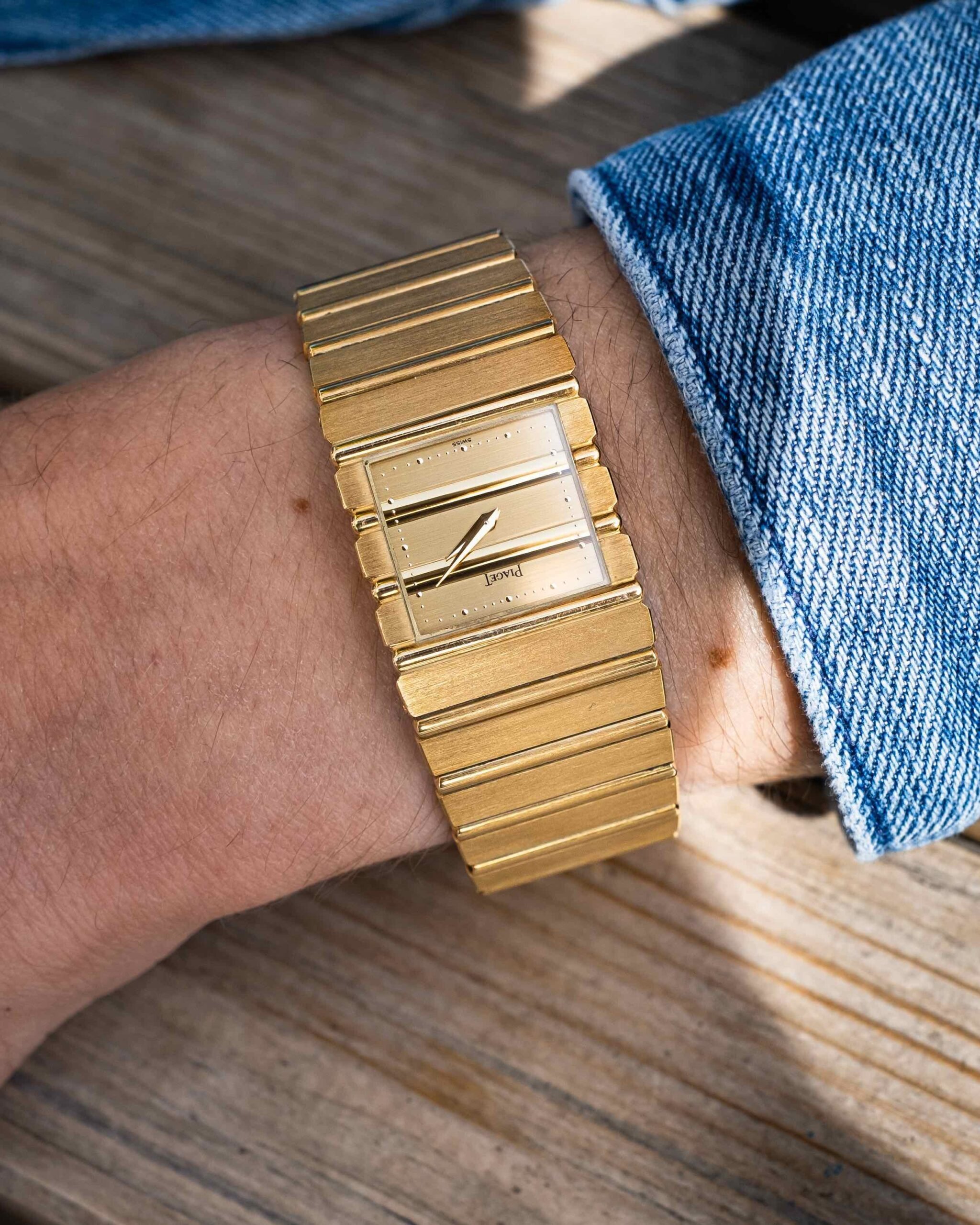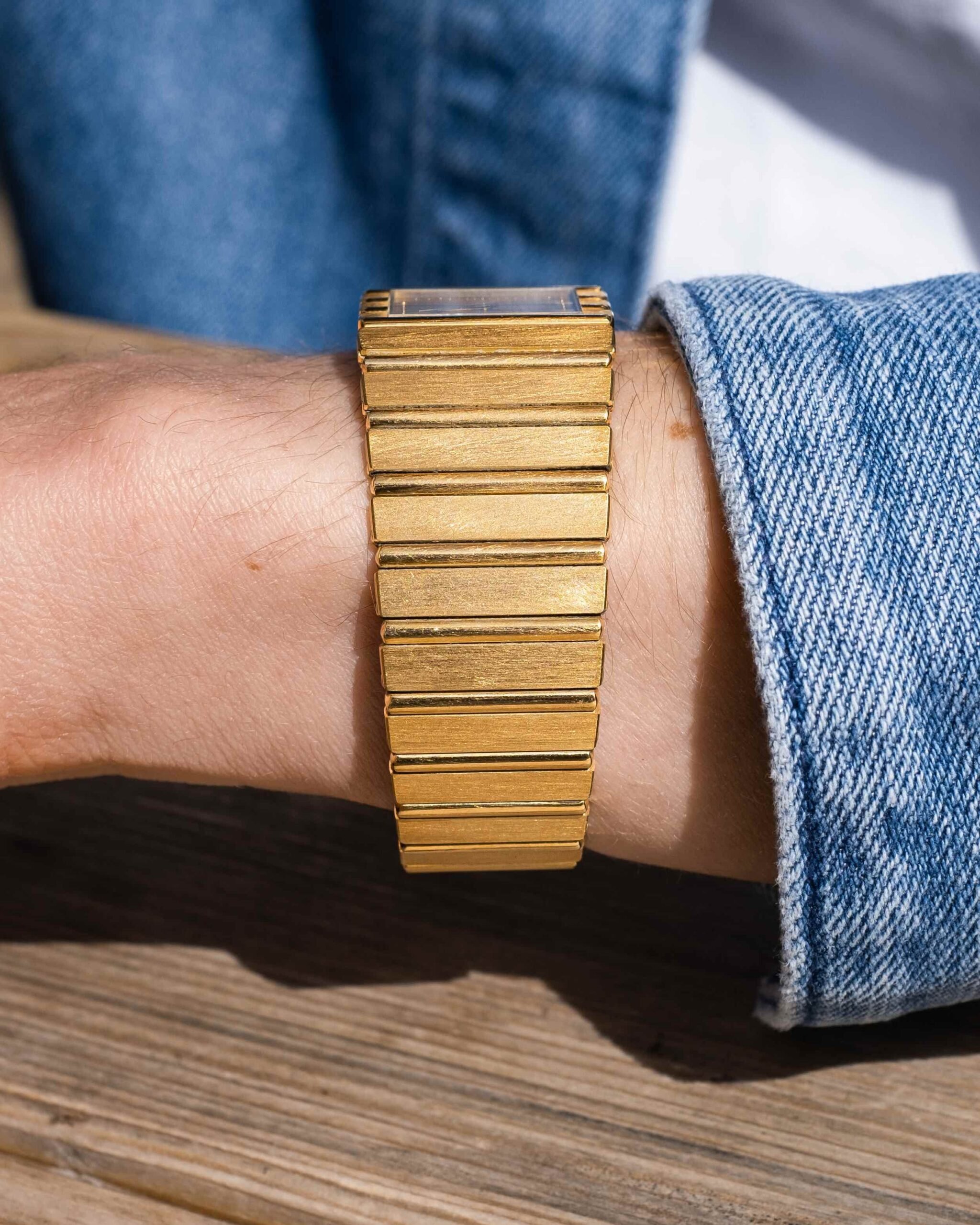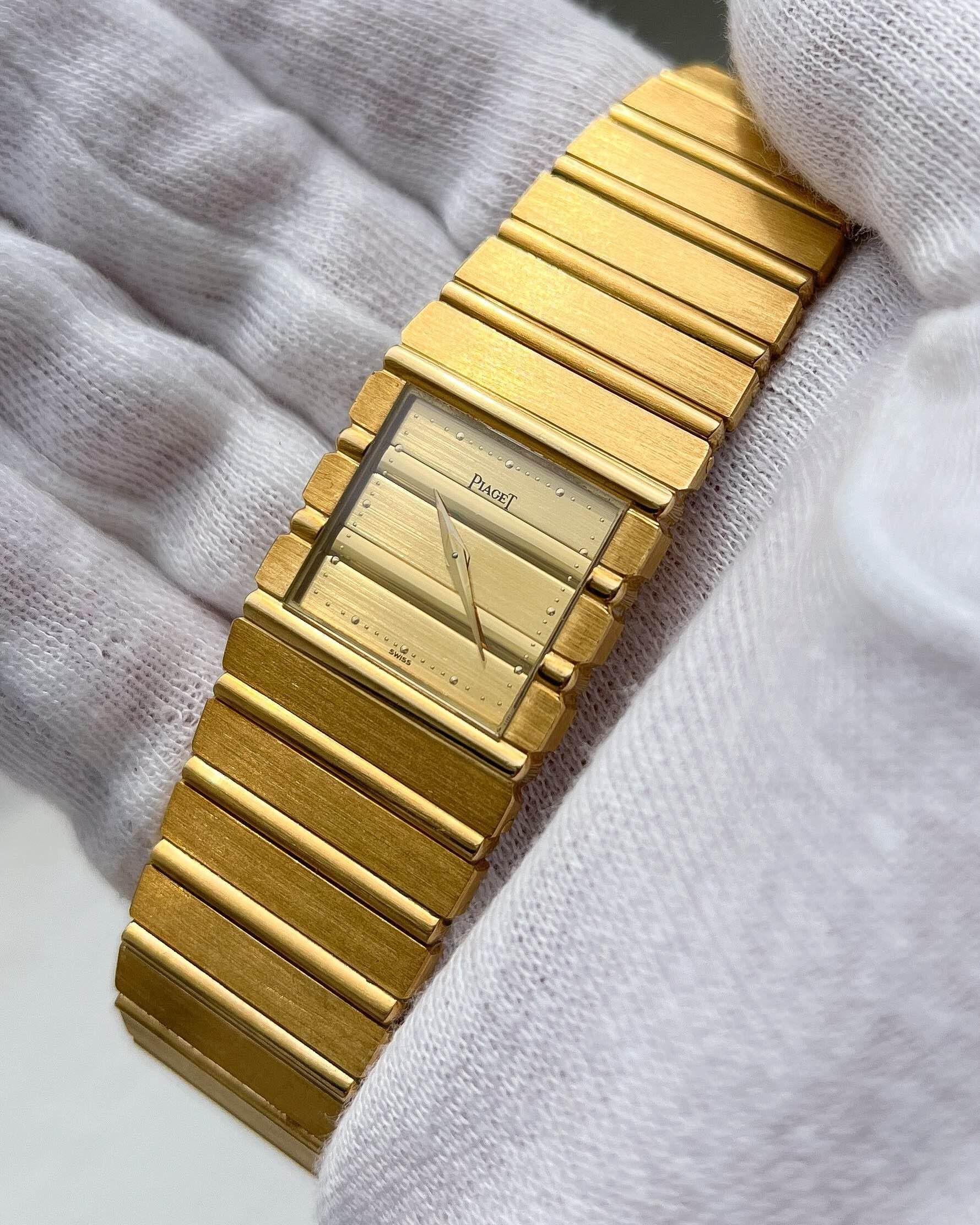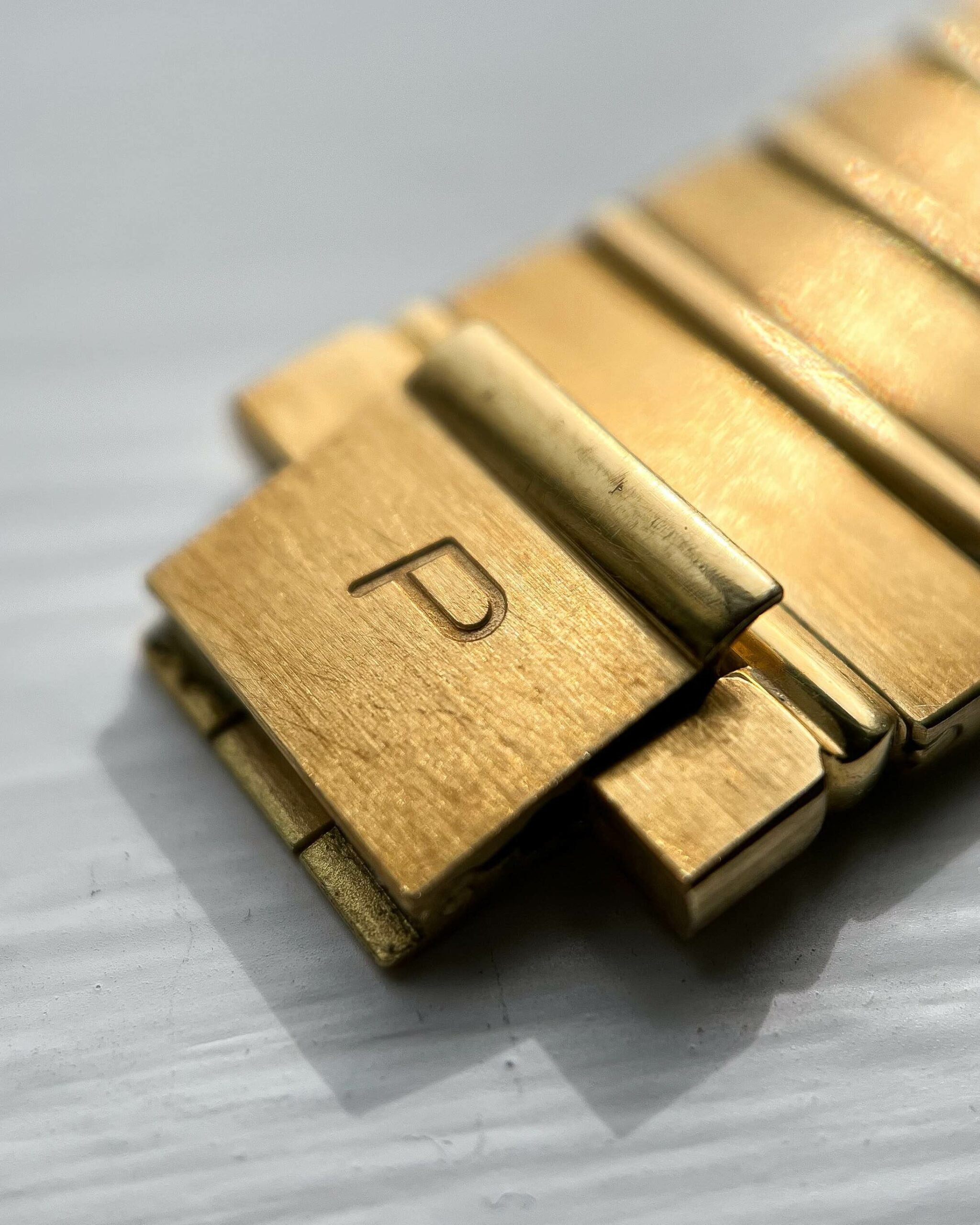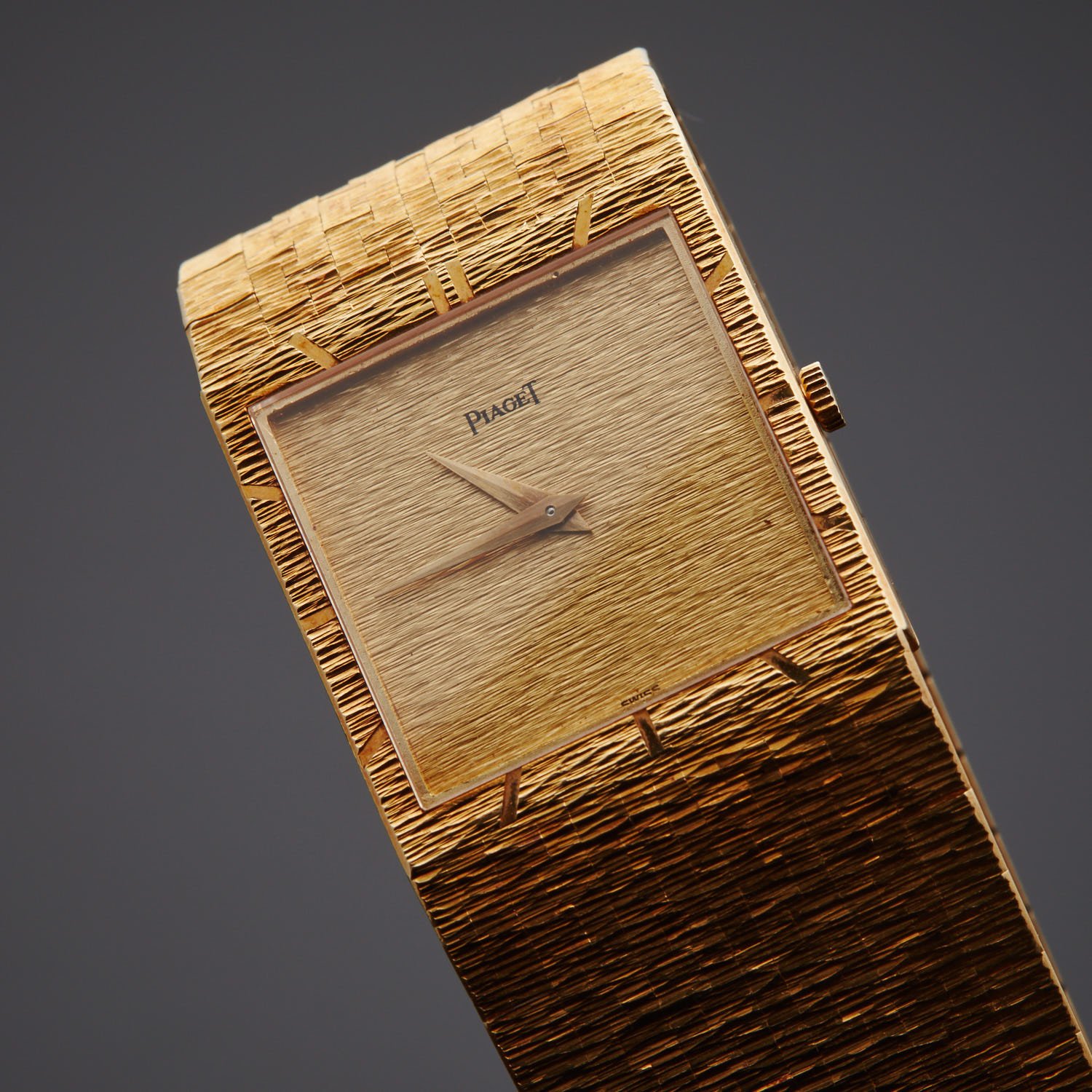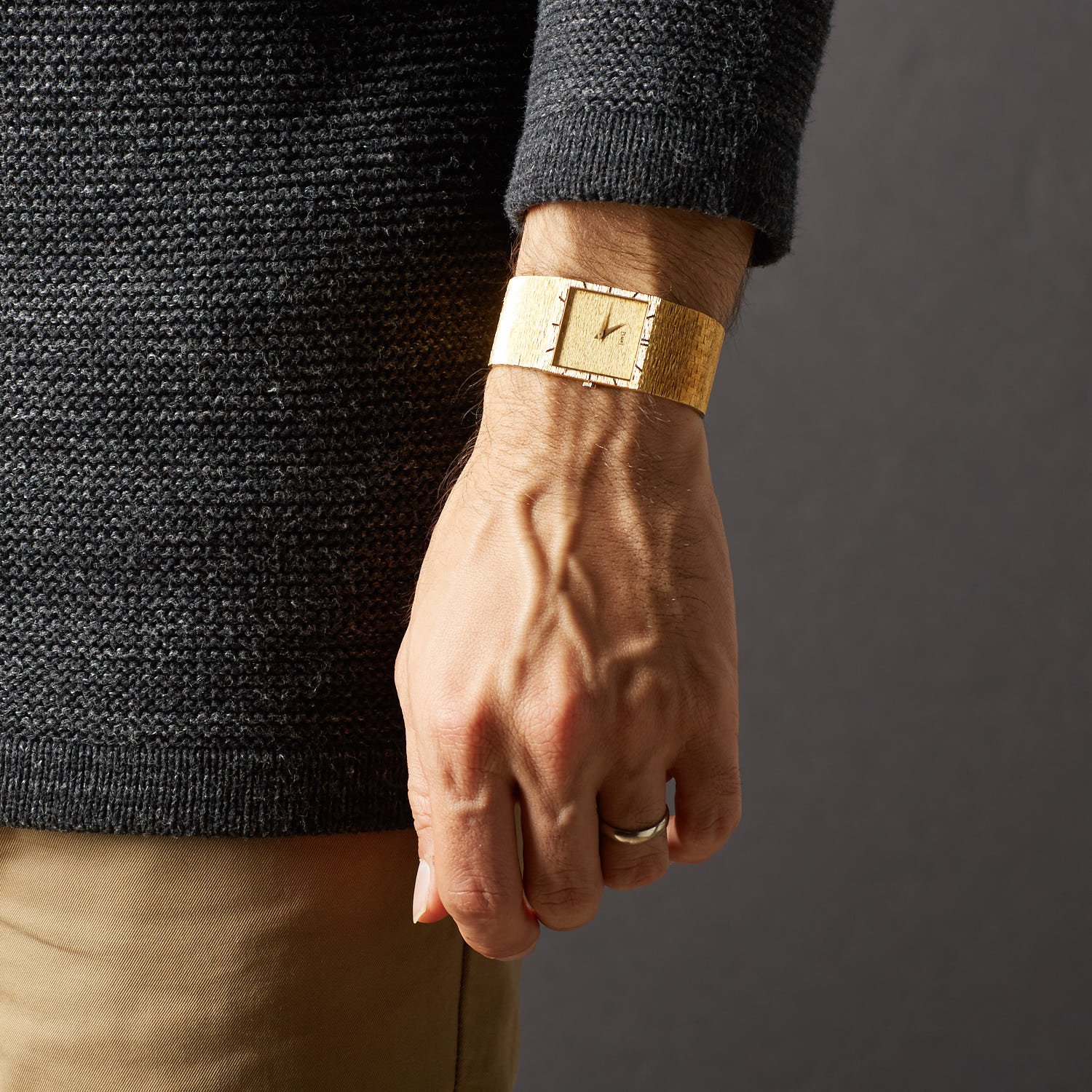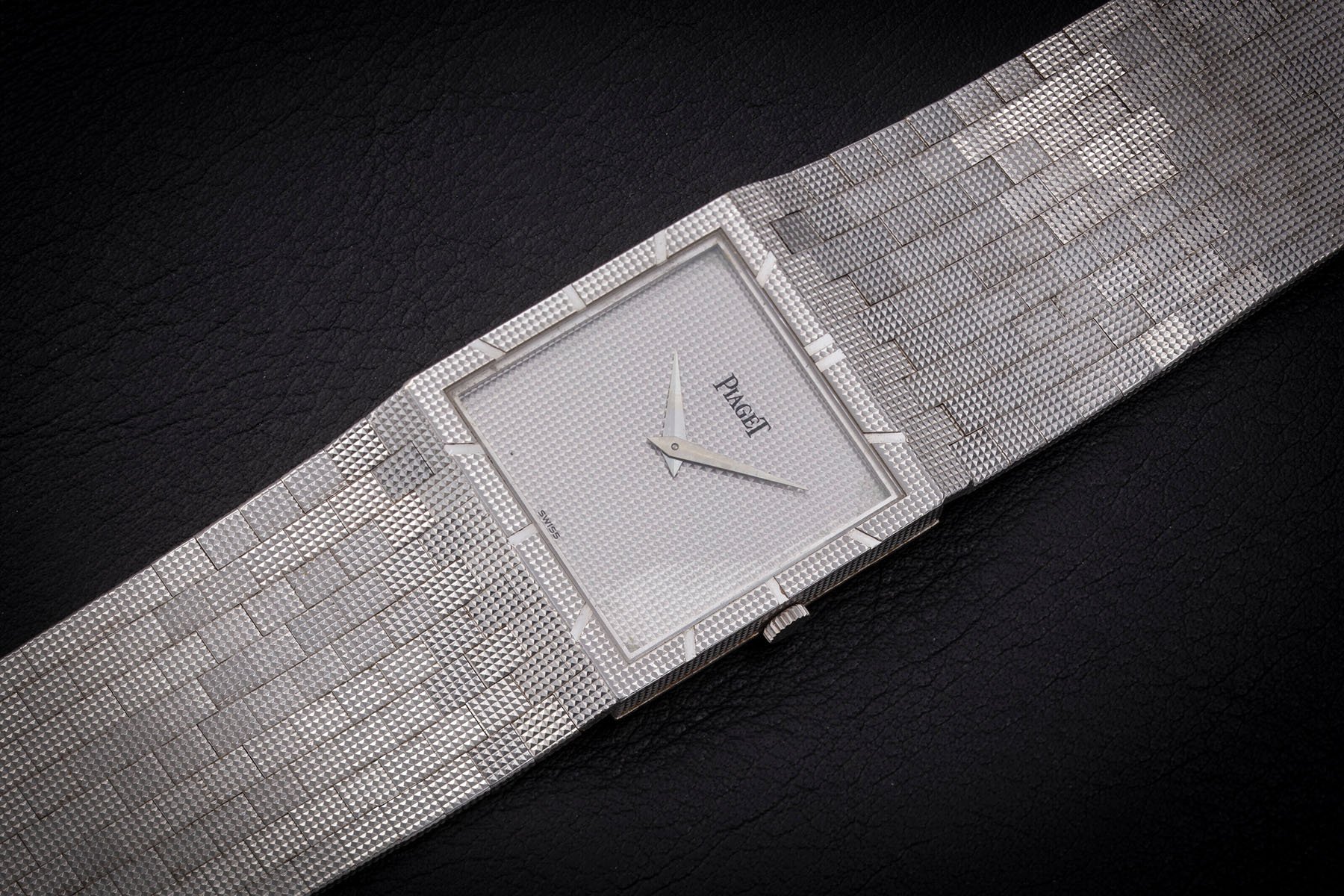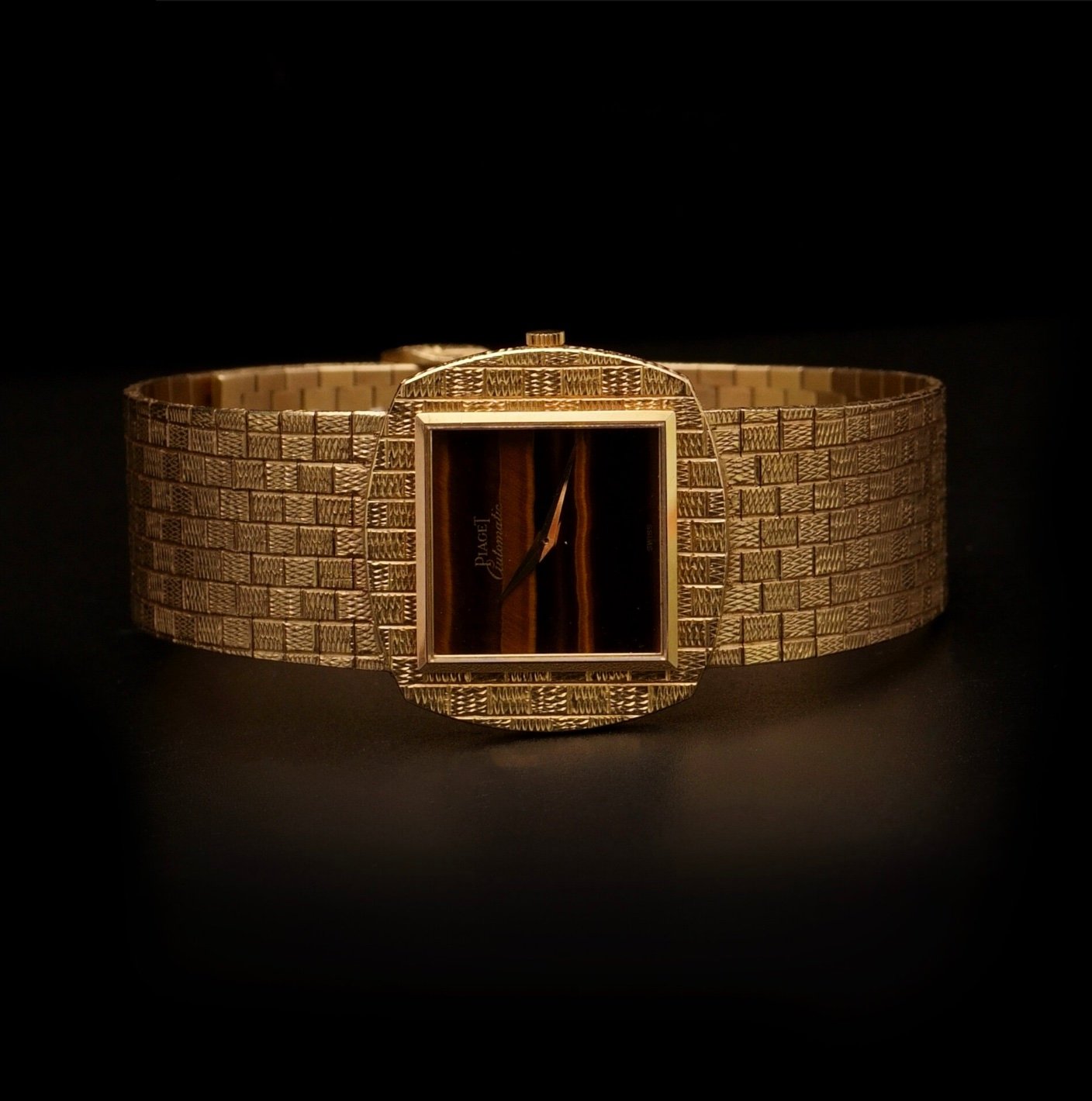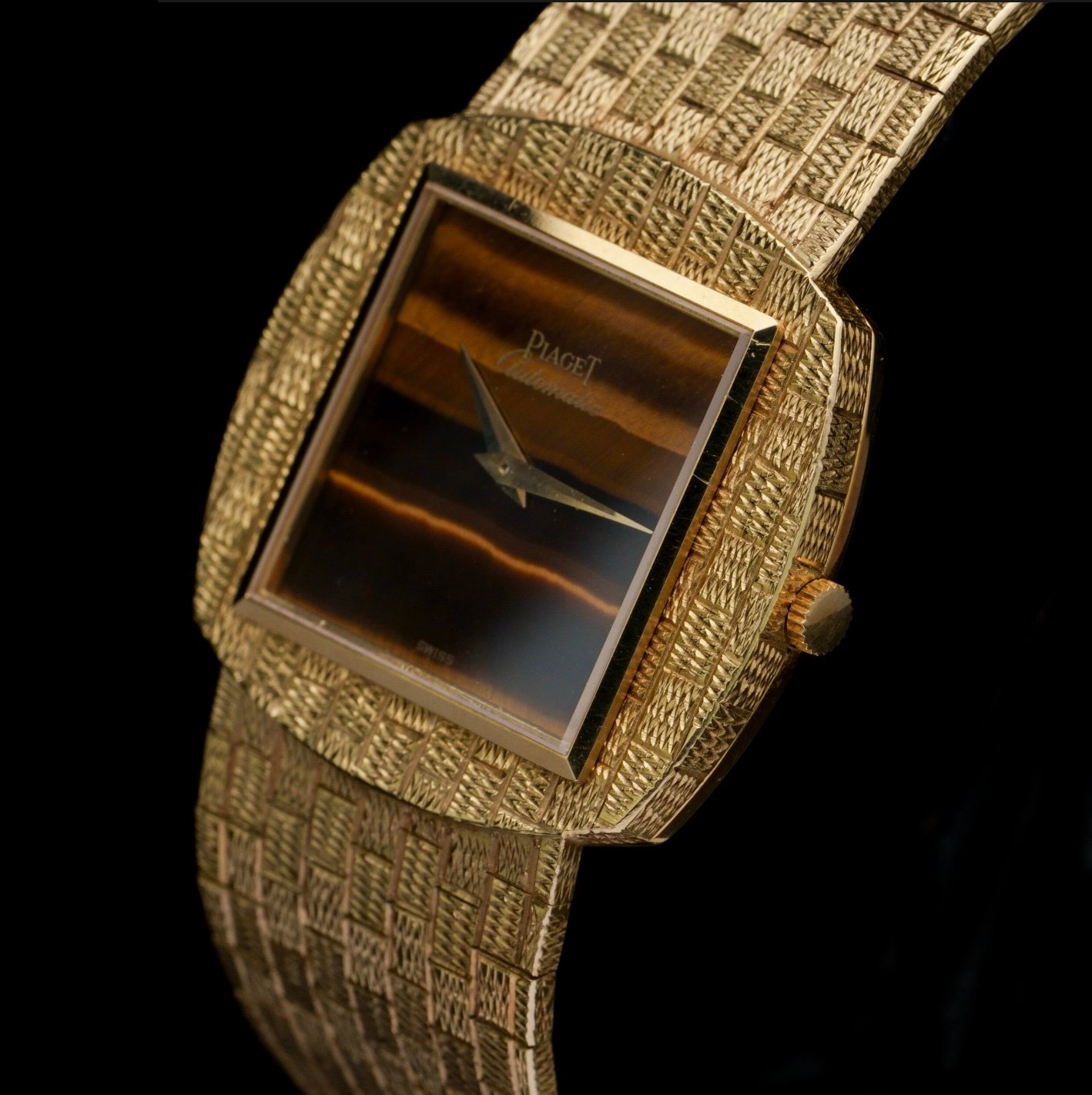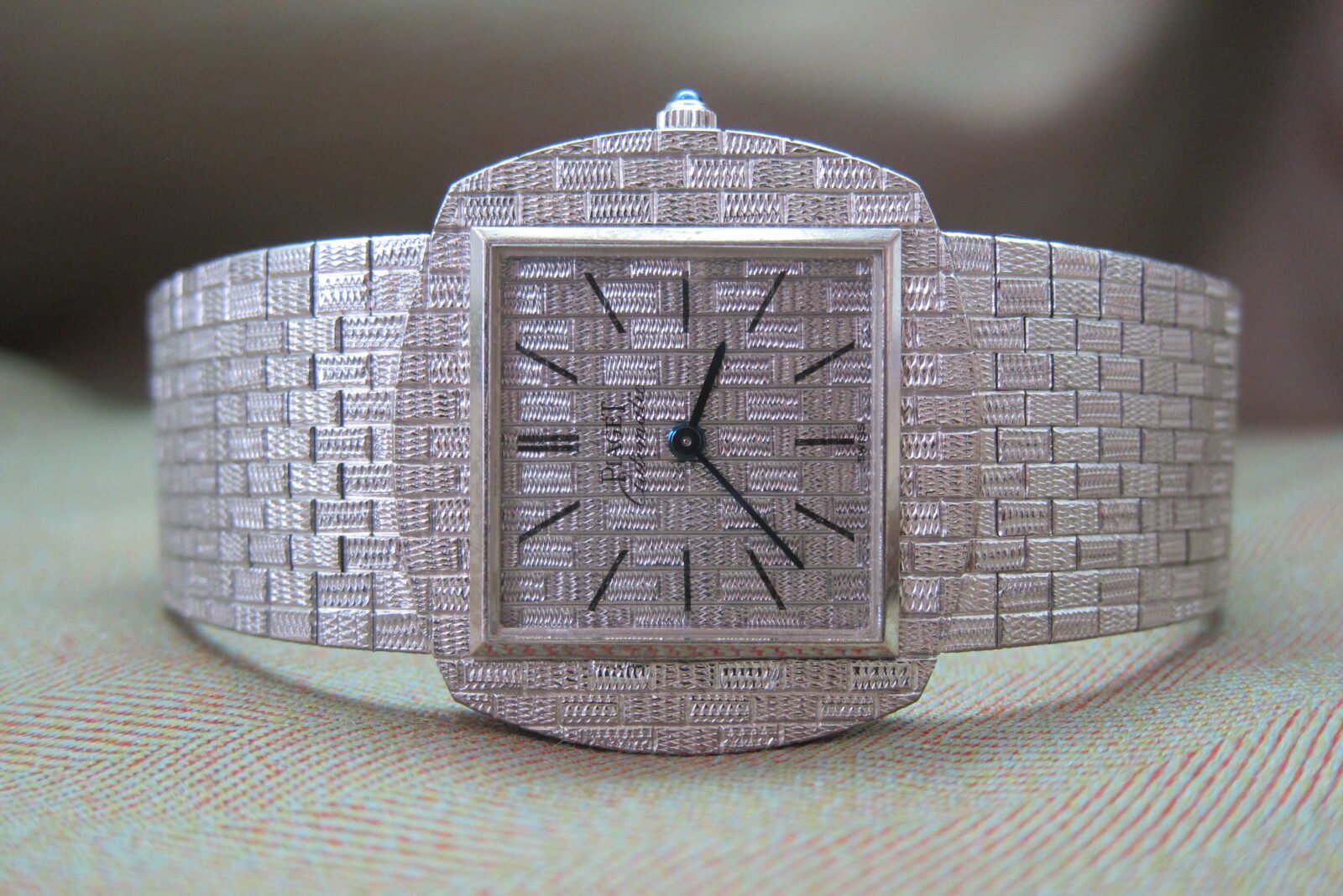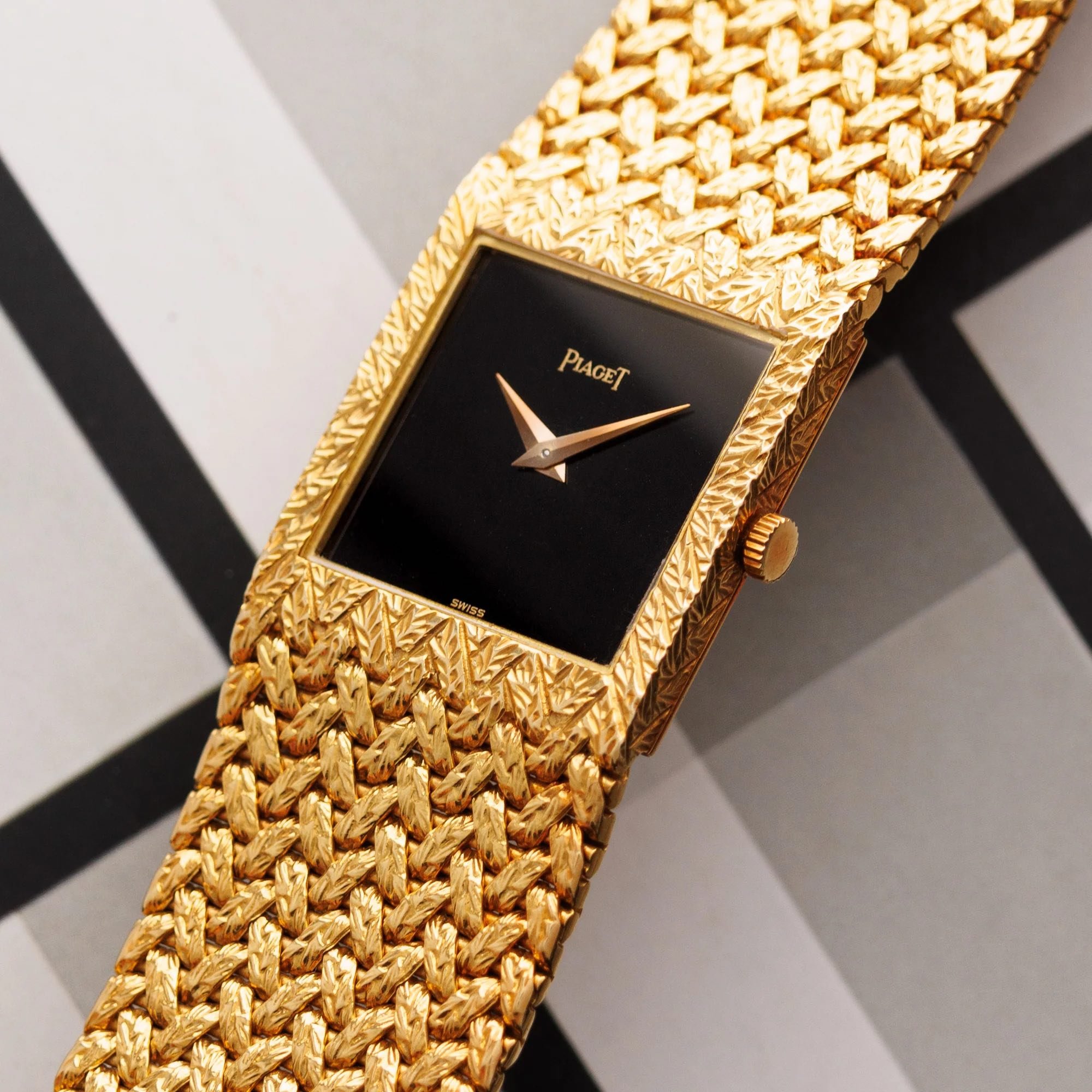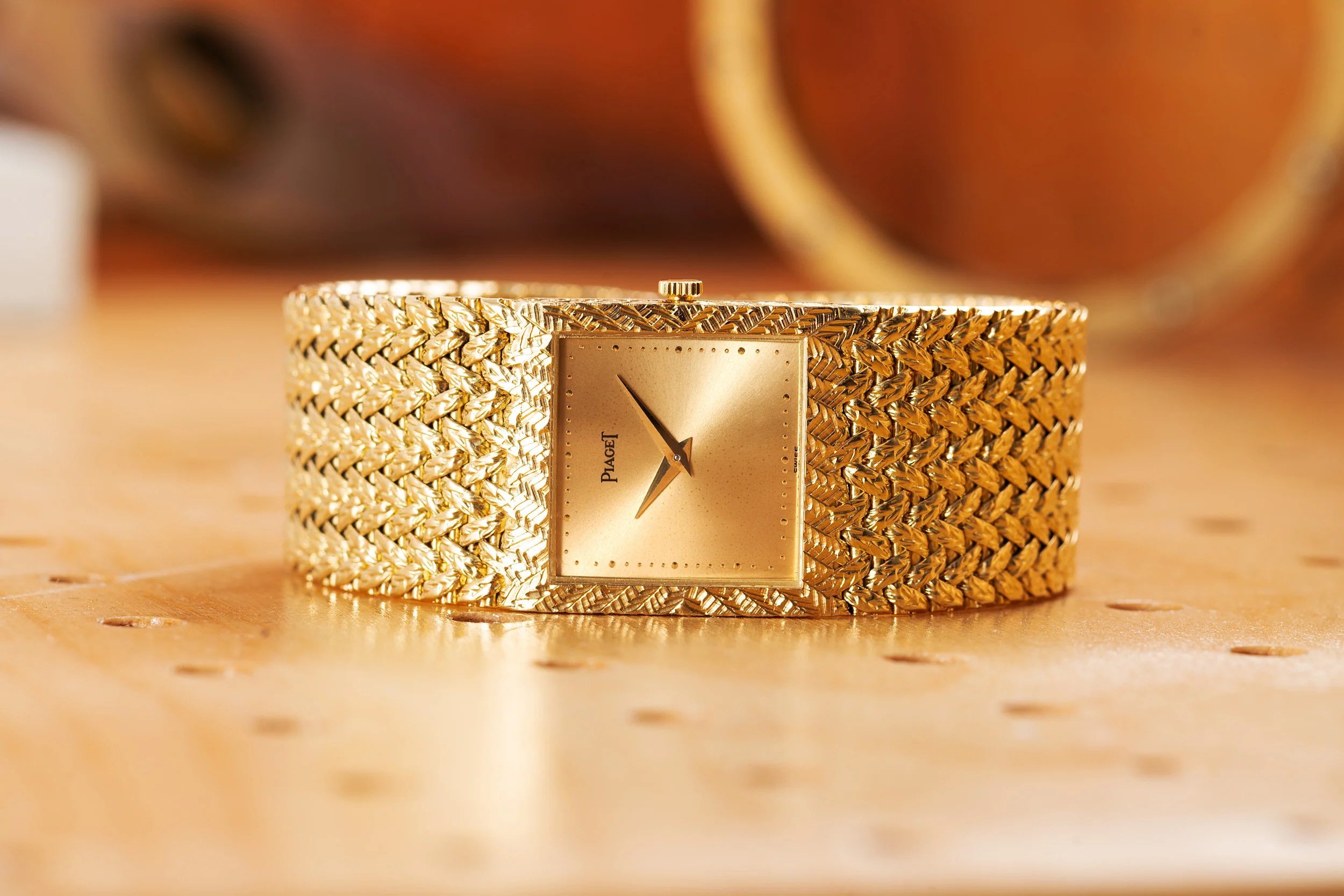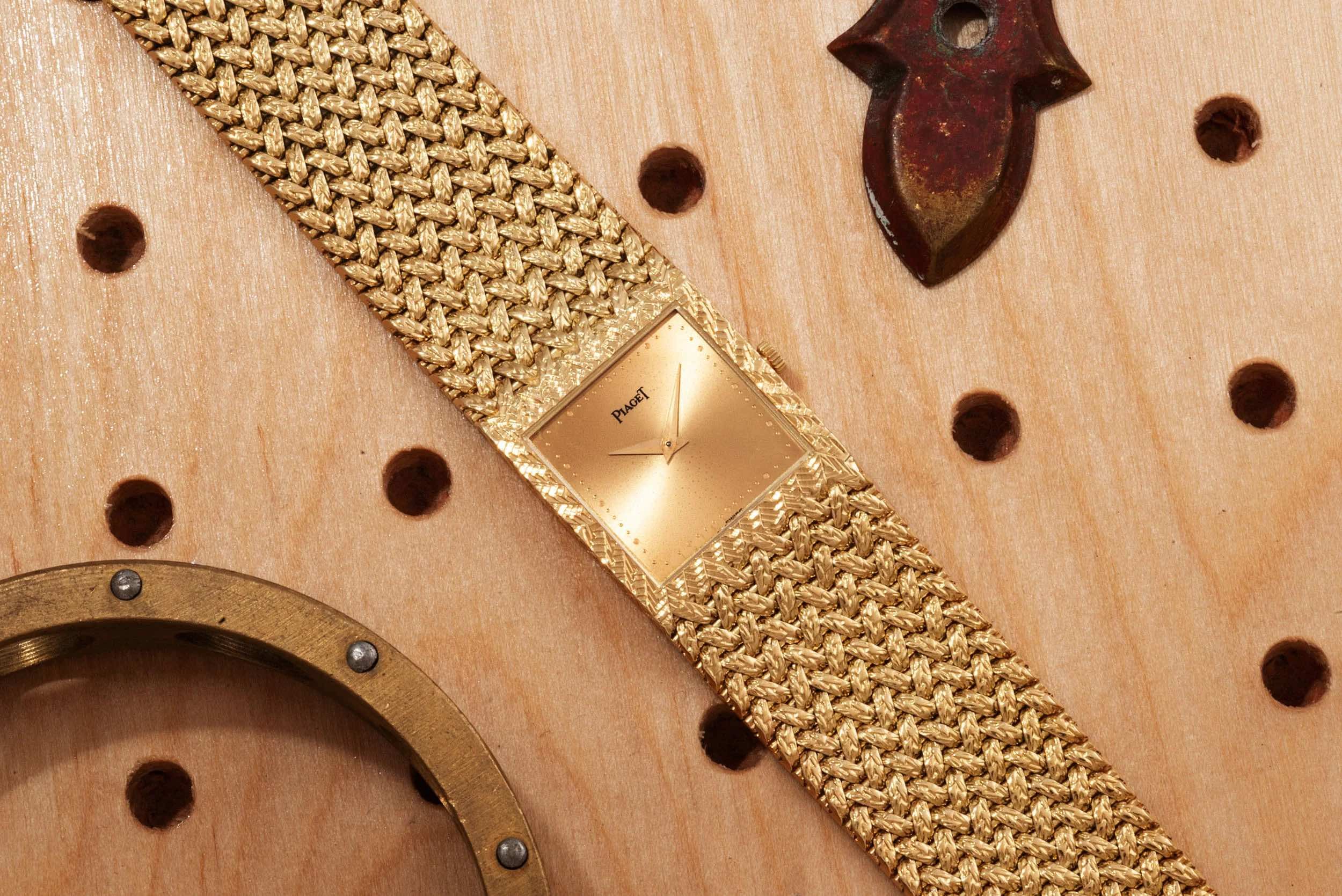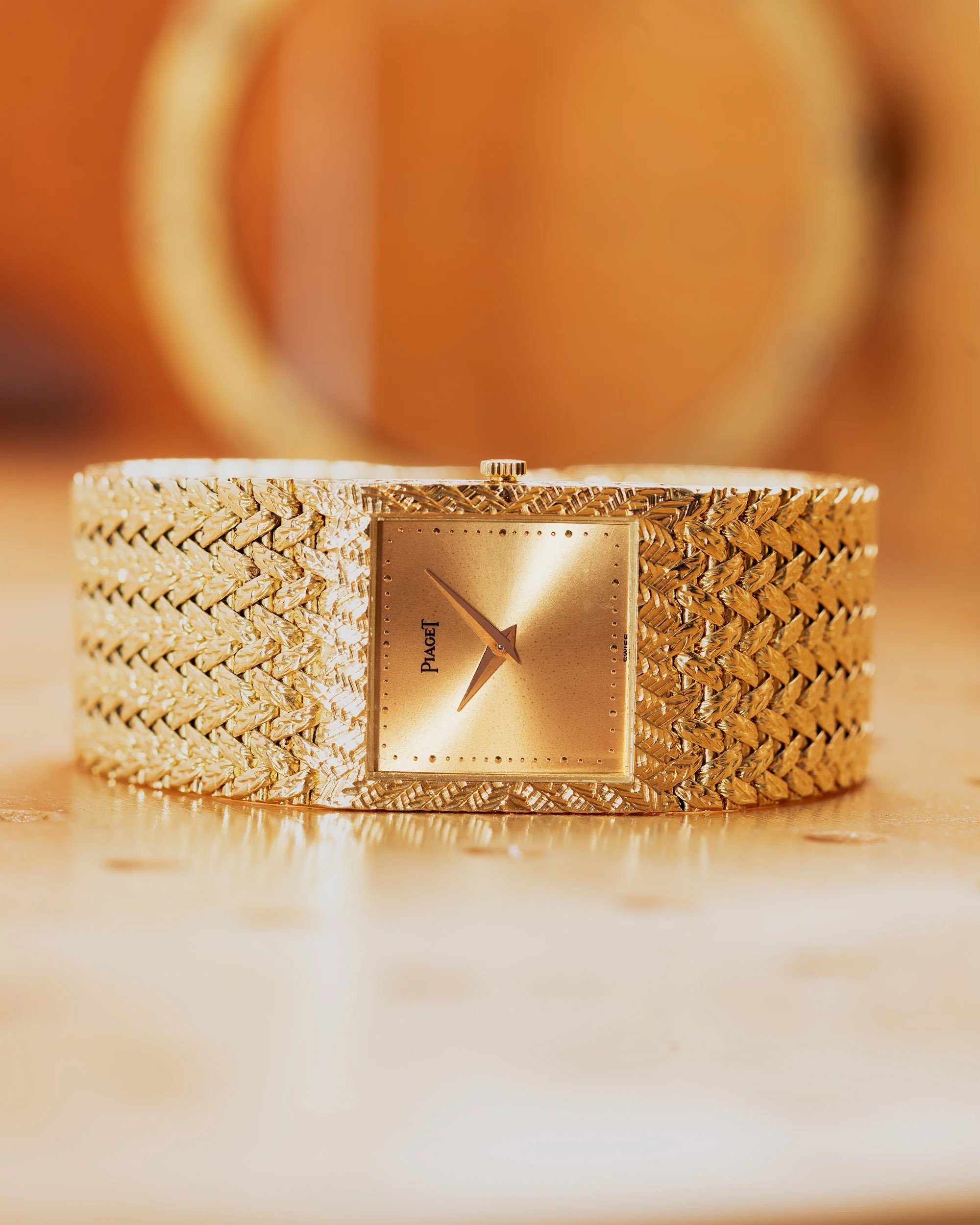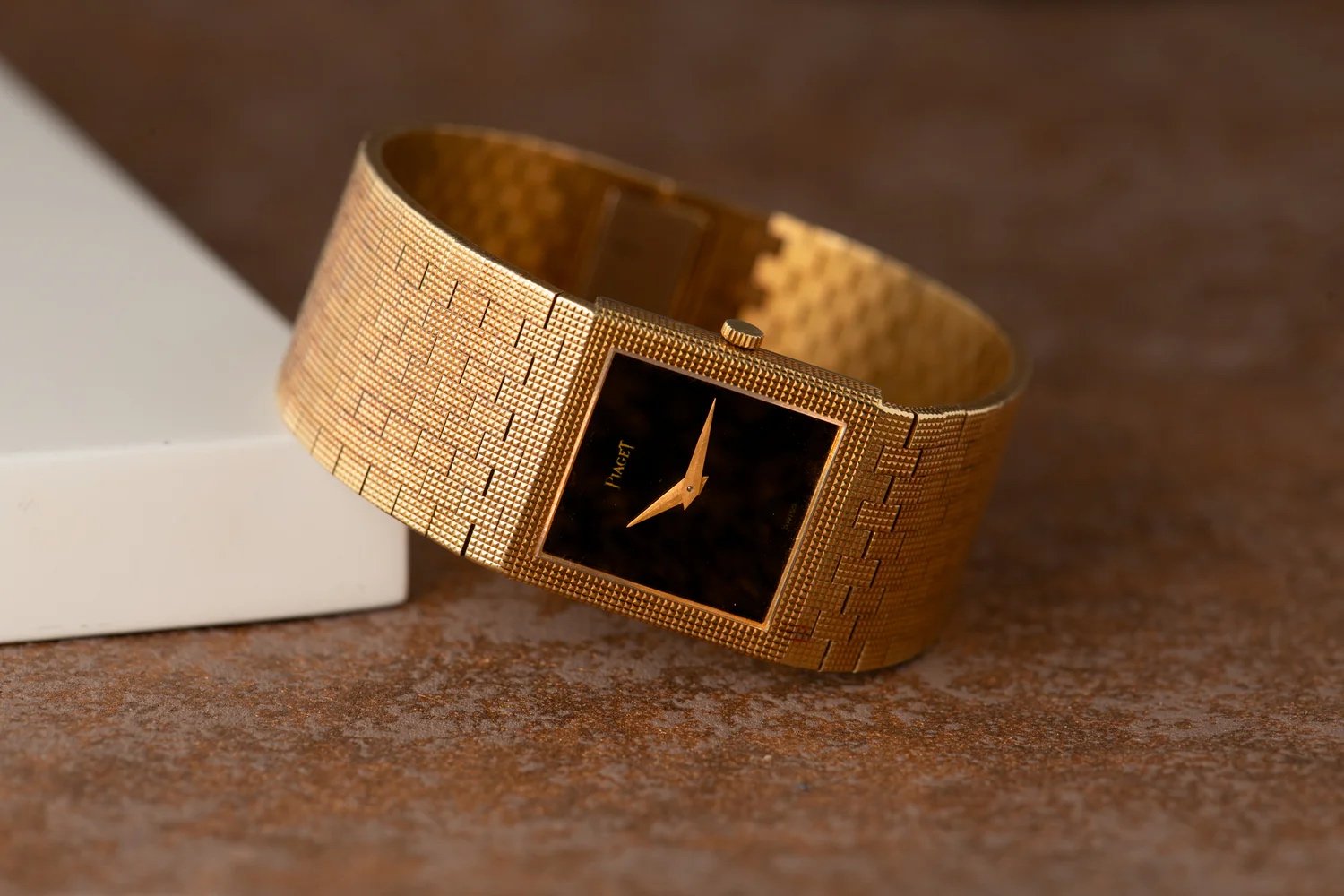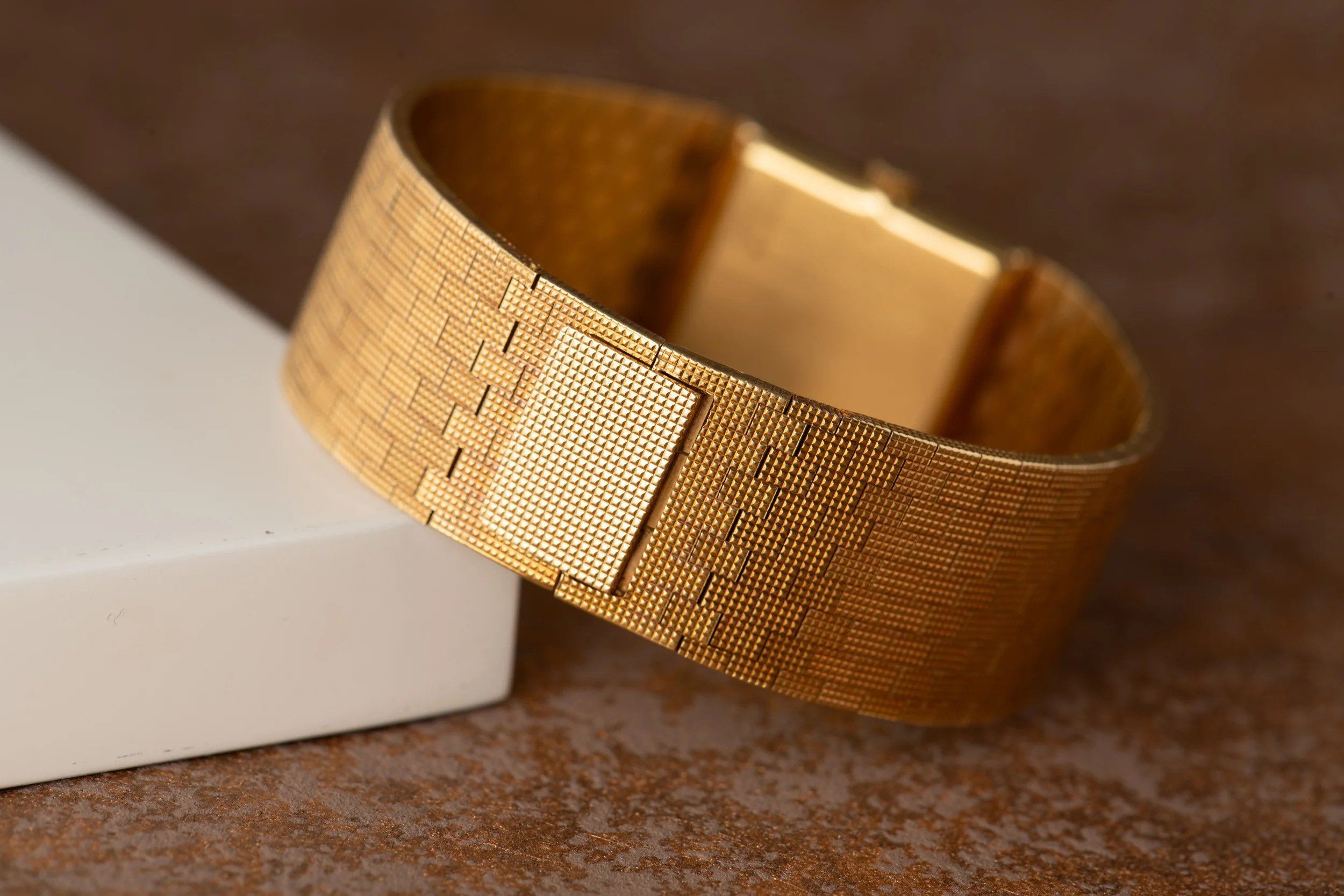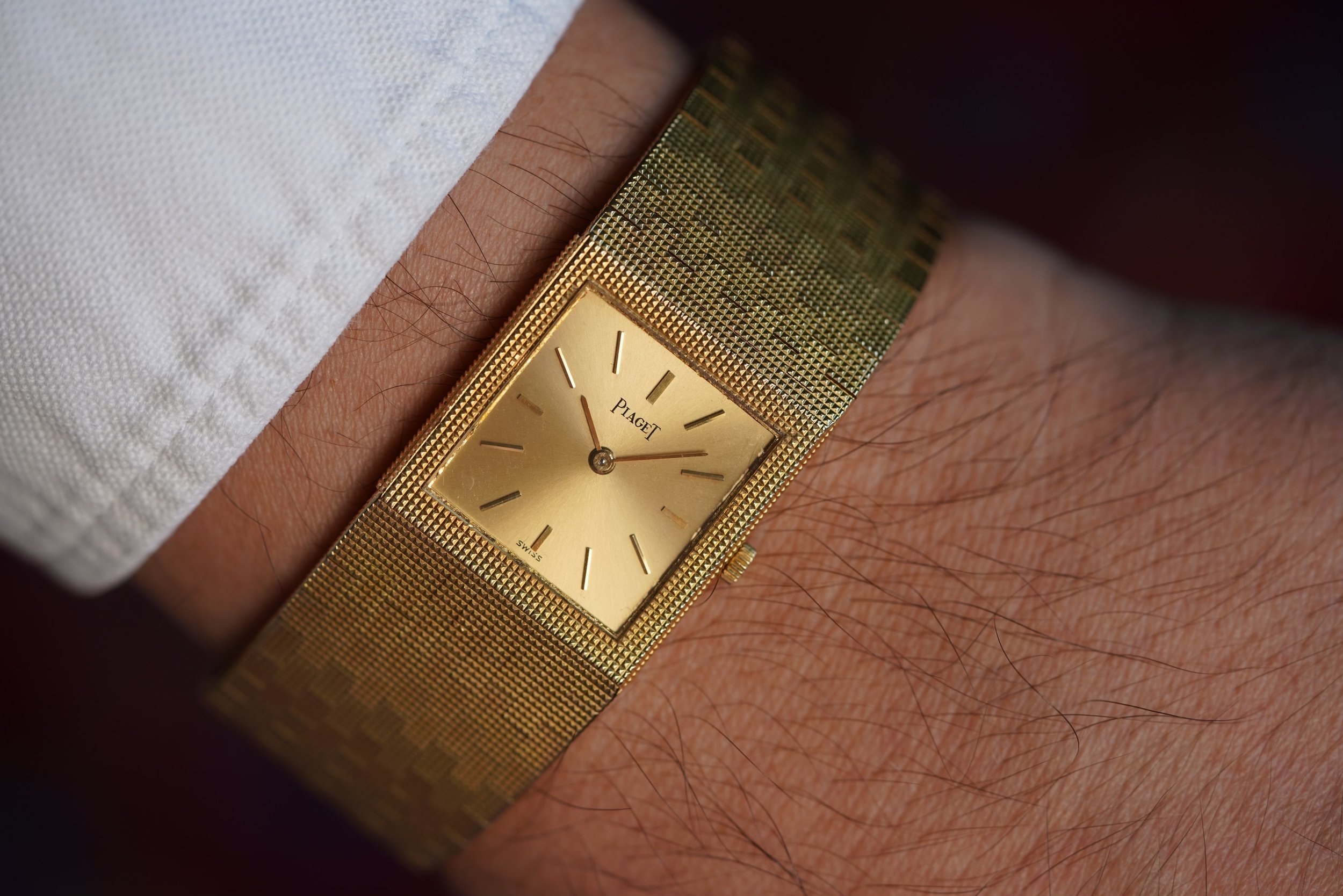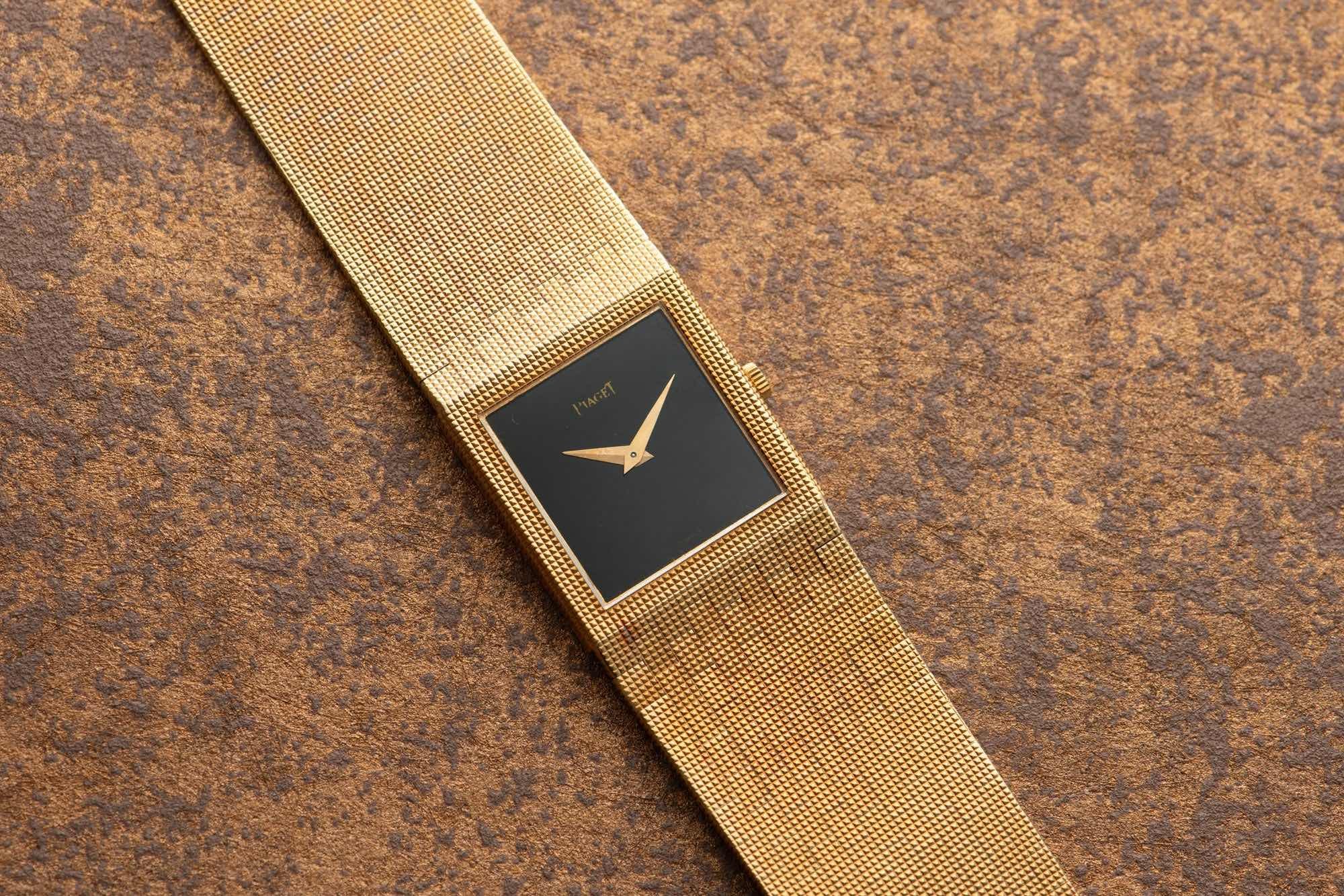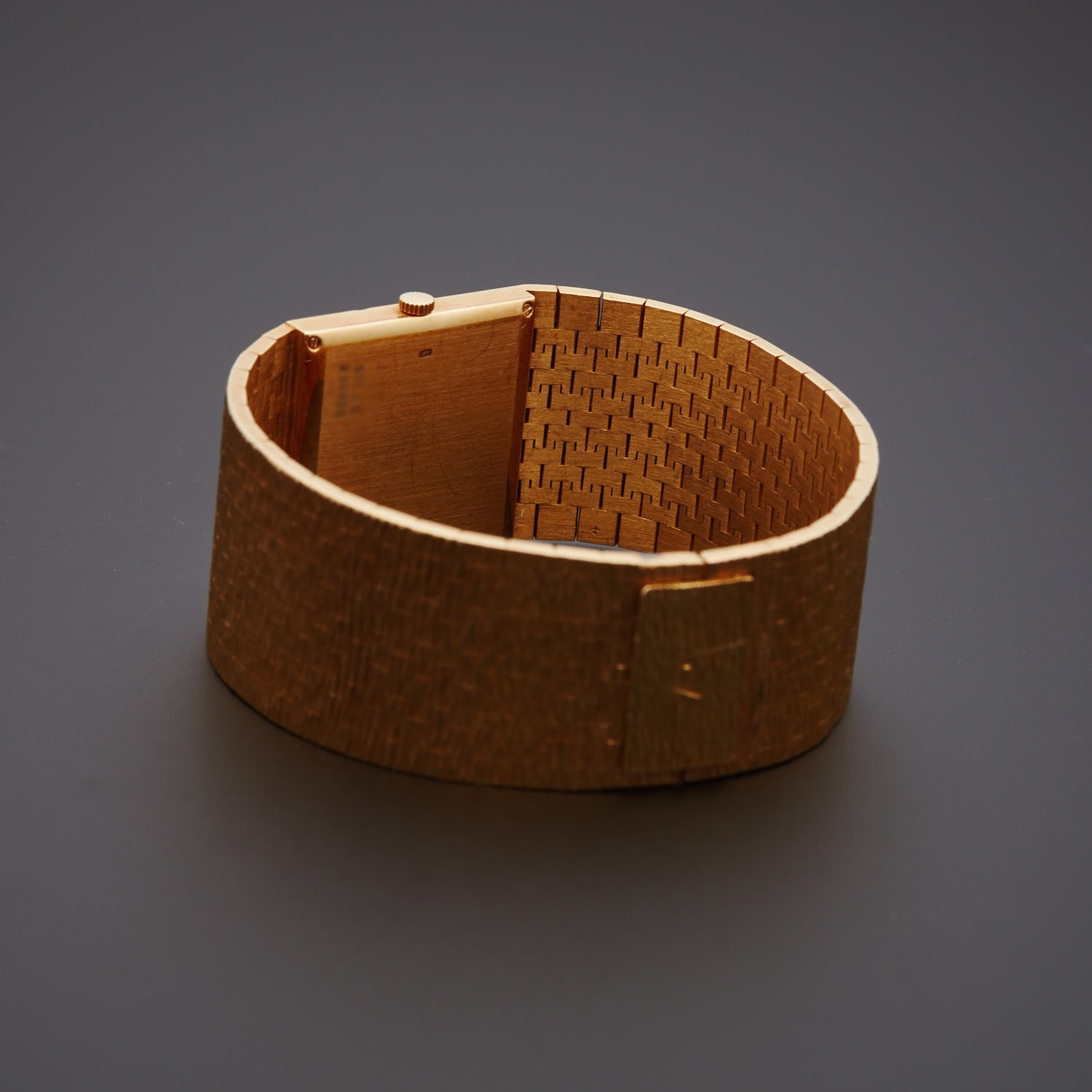Fratello’s Top 5 Vintage Piaget Bracelet Watches — How To Be A Baller Without Selling Your House!
Another Friday, another Top 5! After last week’s auction article, it’s time for something different. For this article, we have selected five stunning vintage Piaget watches that show the brand’s brilliance when it comes to stylish bracelet watches. We picked five vintage gold models from the 1970s and ‘80s that instantly boost your baller status. So be prepared to see some proper old-school bling. But don’t think that these watches don’t have horological merit. Some of them come with nice ultra-slim mechanical movements. It’s time to find out more.
This week’s Top 5 is a typical love-it-or-hate-it list. You will either understand the attraction, or you will hate these timepieces. The opinions within the Fratello team are also mixed. Robert-Jan, Laurits, and yours truly love a good gold watch that mimics a bracelet, while others would rather not look at such a thing. Consequently, this list might spark quite a bit of discussion. But let’s not forget that Piaget created some super slim mechanical movements for some of the watches on this list. So it’s not just about the looks. That said, to be fair, the looks are what most of us will judge these watches on. Now, without further ado, let’s get into our list of five gold Piaget marvels of style that will make you a true baller, sometimes for remarkably friendly prices!
Piaget Polo ref. 7131
We’ll kick things off with the original Piaget Polo, not the round-shaped model that was recently reintroduced but the square one. The Piaget Polo ref. 7131 debuted in 1979 and stayed in production until 1990. While the square version might not be as popular as its round counterpart, it is the better bracelet watch thanks to its shape.
The watch is a modest 25mm wide, but don’t be fooled. As it is solid 18K gold, it will stand out once you have it on your wrist. The watch is defined by its classy satin finish with the now-characteristic polished horizontal gadroons.
As many of you will know, most of the Piaget Polo watches from this era housed quartz movements. The brand created several automatic versions of the square model (ref. 5131), but they are scarce. Those that pop up at auctions sell for ridiculous prices as they have become true collectors’ pieces. Piaget used its quartz 7P caliber for the ref. 7131.
With a thickness of just 3.1mm, it was the thinnest quartz movement in the world at the time. The movement could be operated with a “hidden” crown on the case back. However, only a year after the introduction of the 7P caliber, Piaget updated the Polo with the 8P. This quartz movement was even slimmer, coming in at just 1.95mm thick.
Low production numbers
While the round-shaped Polo is the more popular of the two, the square model is a better manifestation of the “bracelet watch” concept. Initially, the square model was a bigger commercial success, but that changed over time. In the production run of the two Polo models, Piaget produced an estimated 2,000–3,000 pieces of the square model and 4,000–6,000 of the round one. Considering that spanned 11 years, those numbers are quite low indeed.
Of the total production, 70% of the pieces were yellow gold, 20% were a combination of yellow and white gold, and only 10% were white gold. Finding a square Polo ref. 7131 is possible, with prices starting at roughly €15K and moving up to €20K. That makes this stylish chunk of gold the most expensive watch on this list.
Piaget ref. 935
Next up is the Piaget ref. 935. It’s another one of those brilliant bracelet watches that looks stunning. This reference came in multiple versions in yellow gold and white gold. The watch oozes 1970s style with its all-yellow-gold presence defined by its bark-like texture. The detailing on the watch is amazing.
Besides the texture, you will see hour markers around the crystal that look like they are carved out of gold. The watch weighs a substantial but reasonable 93.4 grams, is 25mm wide, and houses the manual-winding ultra-thin Piaget caliber 9P with a 35-hour power reserve. Of course, it also looks utterly stunning on the wrist.
As I said, there are multiple versions of this reference, each with a different suffix. The one in yellow gold with the bark-like texture is ref. 935 A6. But Piaget also created a white gold version with a hobnail pattern, ref. 935 C4. This version was auctioned by Christie’s in 2022.
As you can see, the Clous de Paris texture is also visible on the dial. Looking back at the ref. 935 A6, you can also see that the bark-like texture continues on the dial. That level of detail makes these watches a joy to behold. On top of that, the ultra-thin profile makes them easy to wear. The only real point of discussion is whether you appreciate the style. Finding one may also pose a slight problem. Currently, we can’t find any for sale online, so it’s difficult to estimate prices.
Piaget ref. 12461
The Piaget ref. 12461 takes style to another level! I completely understand if people find this piece over the top. But as our Fratello Shop manager Laurits put it, “What do you mean, over the top? It’s exactly on the top!” If you are looking for baller points, the ref. 12461 is the one Piaget for you. It is less of a bracelet watch than the previous two. However, while it’s a slight departure from the concept, the style and detailing of this timepiece are remarkable. It was introduced in the late 1960s and represented the brand’s top-of-the-line luxury watches.
The watch was made of white or yellow gold and had a 33mm × 30mm tonneau-shaped case. As you can see, the case and brick bracelet feature a ridiculous amount of detail and a magnificent texture. Another standout element is the square dial, which contrasts with the nicely flowing shapes of the case and the bracelet. This specific version in the pictures features a brilliant tiger eye dial that suits the watch perfectly.
The legendary Piaget 12P movement
But this was not the only version the brand produced. Once again, Piaget offered the watch in white gold with the same texture. Customers could even buy this watch with an all-hobnail pattern. The white gold version was also available with a stunning lapis lazuli dial. Piaget equipped these watches with the famous 12P caliber. This ultra-thin micro-rotor movement was announced in 1960 and measures just 2.3mm thick. It operates at a 19,800vph frequency and has 40 hours of power reserve. It’s a great movement that is the perfect cherry on top (or inside) of this distinctive watch, which goes for roughly €8K–10K. It’s surely an acquired taste, but we love it!
Piaget Black Tie Emperador ref. 9352
Our next pick is at least as striking as the previous one, but it adheres more strictly to the concept of bracelet watches, like the first two picks on this list. The Piaget Black Tie Emperador ref. 9352 stands out immediately because it combines a rectangular 23mm-wide case with a “Basketweave” gold bracelet. Combined with the black onyx dial like in the image above, this raises the wearer’s baller status to the max.
Piaget offered the watch with multiple dials, including lapis lazuli and gold versions. Additionally, some dials have hour markers in a variety of styles, while others do not have any markers at all. I prefer the versions without markers or very small, decorative ones, like in the two watches you see here.
Inside the watch, you will find the hand-wound Piaget 9P caliber used throughout its production period during the 1960s and 1970s. The ultra-thin movement operates at 19,800vph and has a 35-hour power reserve. The watch was also produced in white gold with several different dials.
But I think this style works best in yellow gold, specifically with the woven bracelet. It creates maximum impact, and isn’t that what it’s all about? Expect asking prices between €7,500 and €8K for one of these stunning pieces.
Piaget ref. 9131
We’ll close out this list with the stunning Piaget ref. 9131. Specifically, reference 9131 C4 is my favorite. It combines a yellow gold case and bracelet with a fine hobnail pattern, giving it a distinct and stunning aesthetic. As a fan of black onyx dials in gold cases, it is no surprise that this is my top pick.
Piaget also made this 23mm watch with a gold dial and more traditional markers, and that also looks stunning. It’s fascinating to see the hobnail pattern on all the watch’s surfaces, including the brick bracelet and the clasp.
You will see ref. 9131 with sword-style hands and dauphine hands, lapis lazuli dials, black onyx dials, and gold dials, either plain or with a hobnail pattern. The variations are nearly endless. In addition, there are different executions with other textured patterns in the gold. There is even a version without a pattern in white gold. That last variation puts an extra visual emphasis on the brick bracelet and creates a very clean aesthetic with the brushed white gold case.
Inside these watches, Piaget used its 9P movement, which also powered the ref. 935. For me, the ref. 9131 is the ultimate bracelet watch that Piaget created. It was in production from the early 1960s to the 1980s, showing its relevance in the collection. Expect to see asking prices starting just north of €10K and moving up depending on the variation of this stunning timepiece.
Final thoughts on the top five Piaget bracelet watches
There you have it — our favorite Piaget bracelet watches in no particular order. If you are interested in these, you will find various versions indicated by the suffix following the reference number. This is just a small selection of the many references and executions that the brand produced during the 1960s, ’70s, and ’80s. While we understand these are not your standard timepieces, it is fun to explore Piaget’s history and discover what makes the brand unique. A big part of it is the ability to bridge the gap between watches and jewelry. These five picks are the perfect proof of that. But we are curious to hear your opinion on these flashy timepieces. Let us know in the comments section, and we will see you next week for another installment in this series!
Featured image: Keystone Watches

